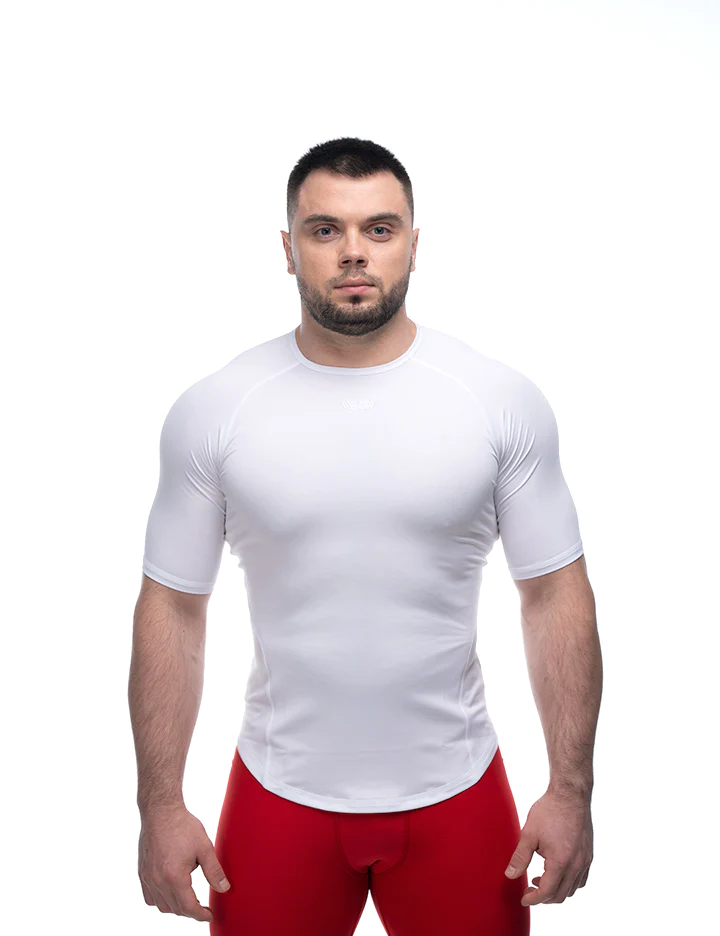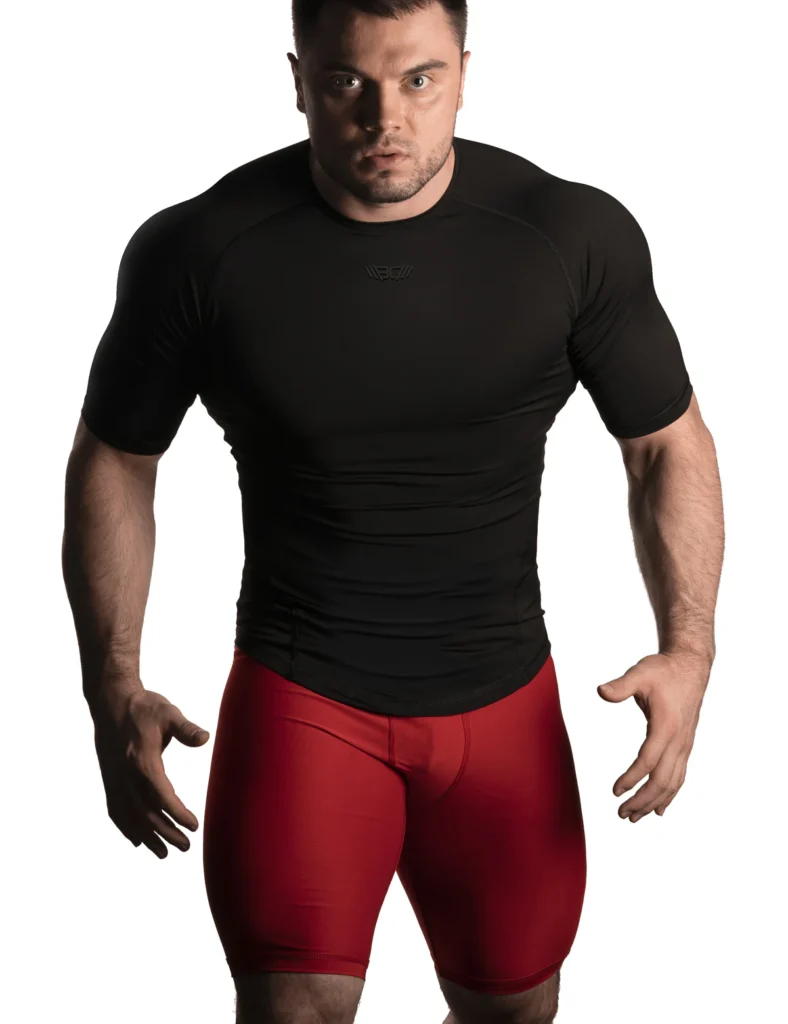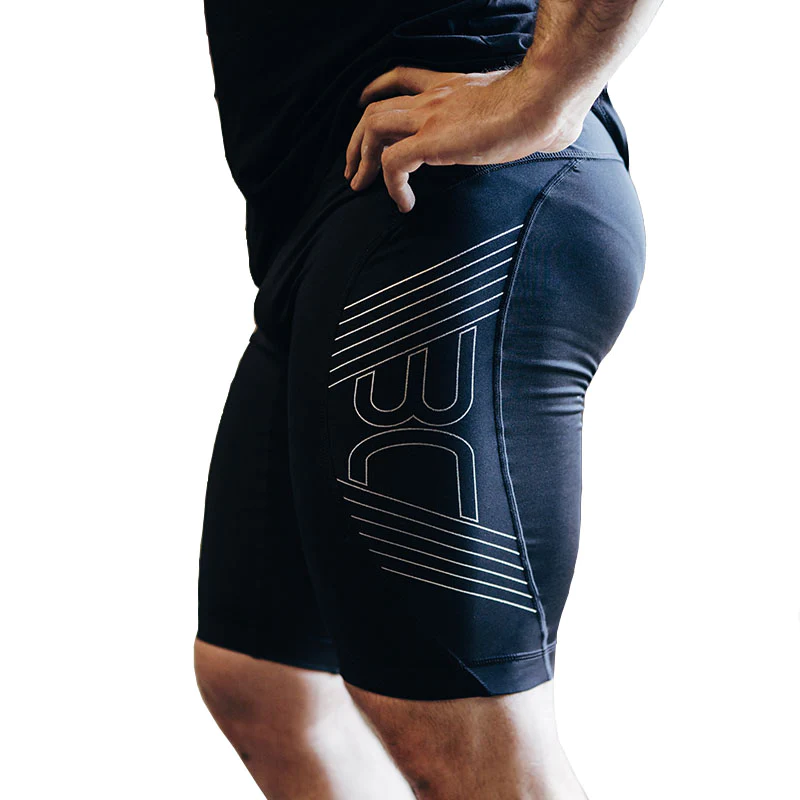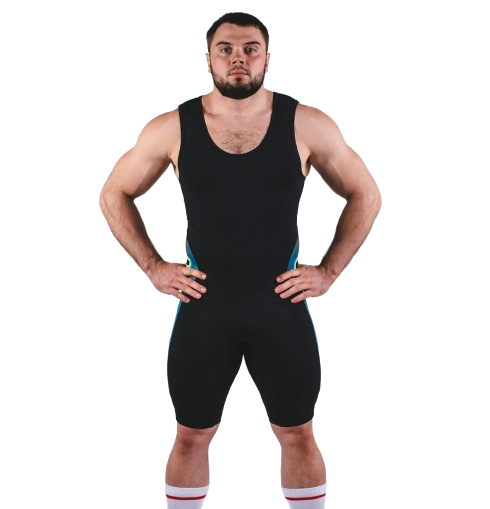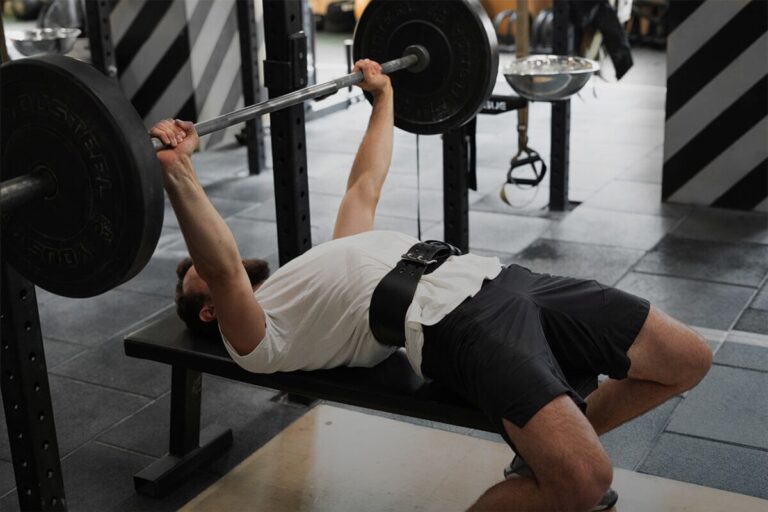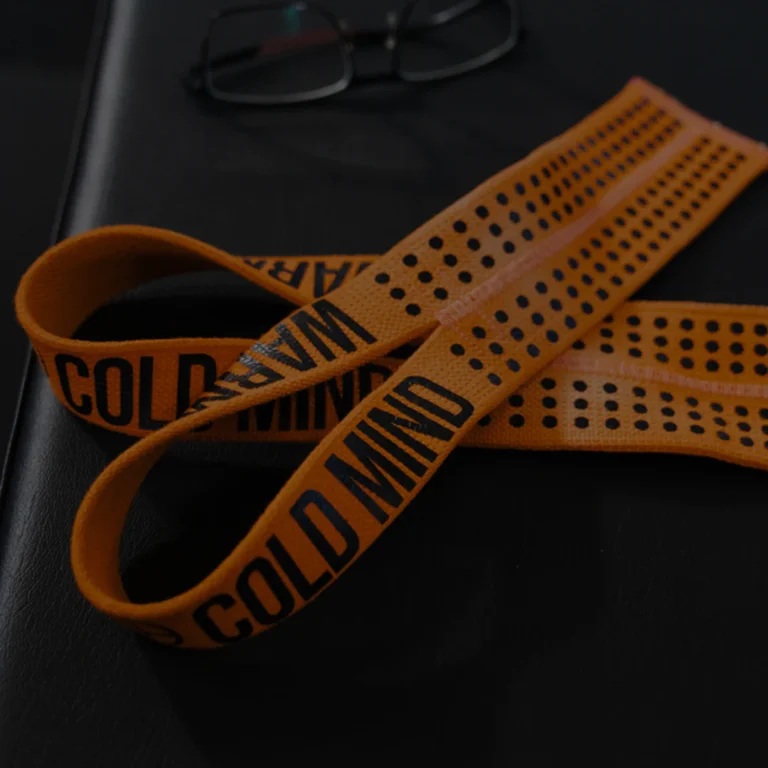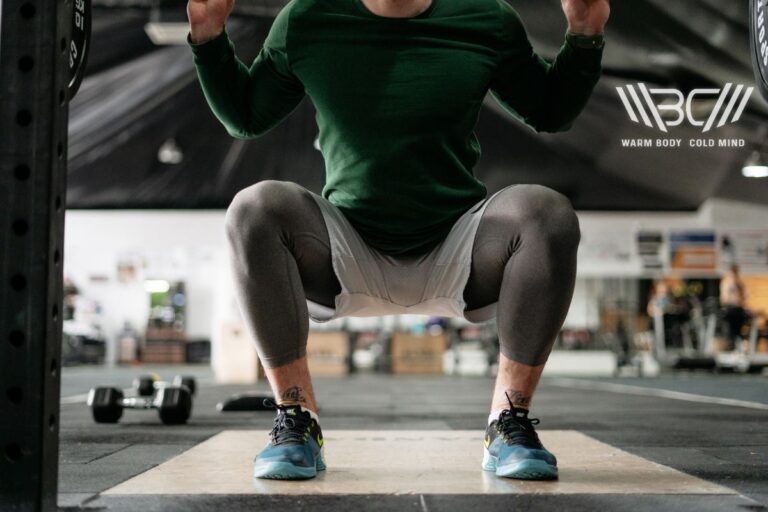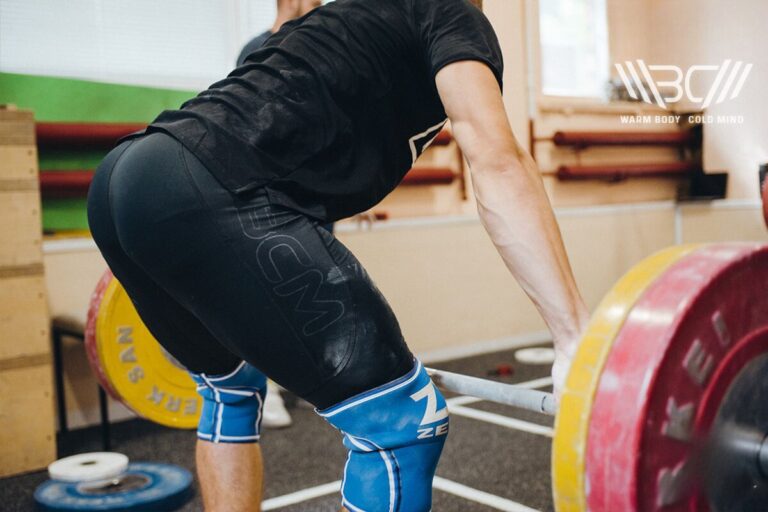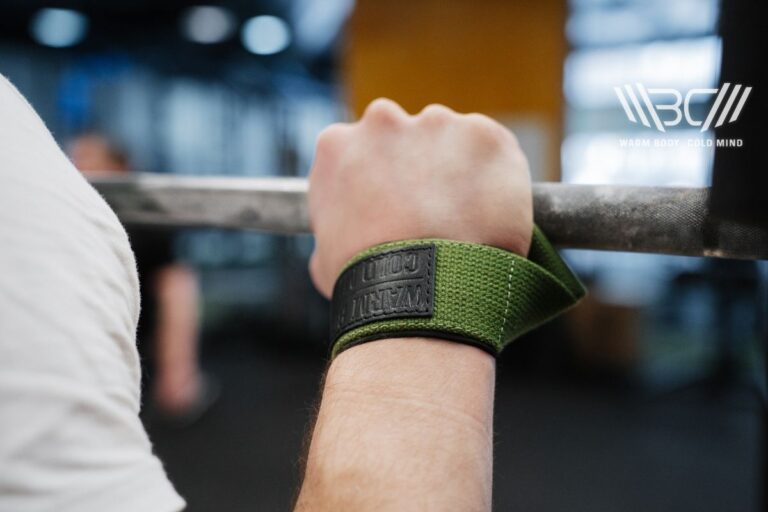Size Guide Compression Clothing for Athletes
We know you’re more interested in your PRs than clothing, but there’s no way you don’t know that what you wear can affect your performance. Try running a marathon in shoes that are too small or too big and you’ll understand how important the right fit is – with everything.
Our topic for today aren’t shoes, but sports compression garments and to help you choose the correct fit for your body size. Since compression clothing has a specialized purpose (improve blood circulation and help reduce muscle fatigue), picking the correct size might not be as straightforward as with regular clothing.
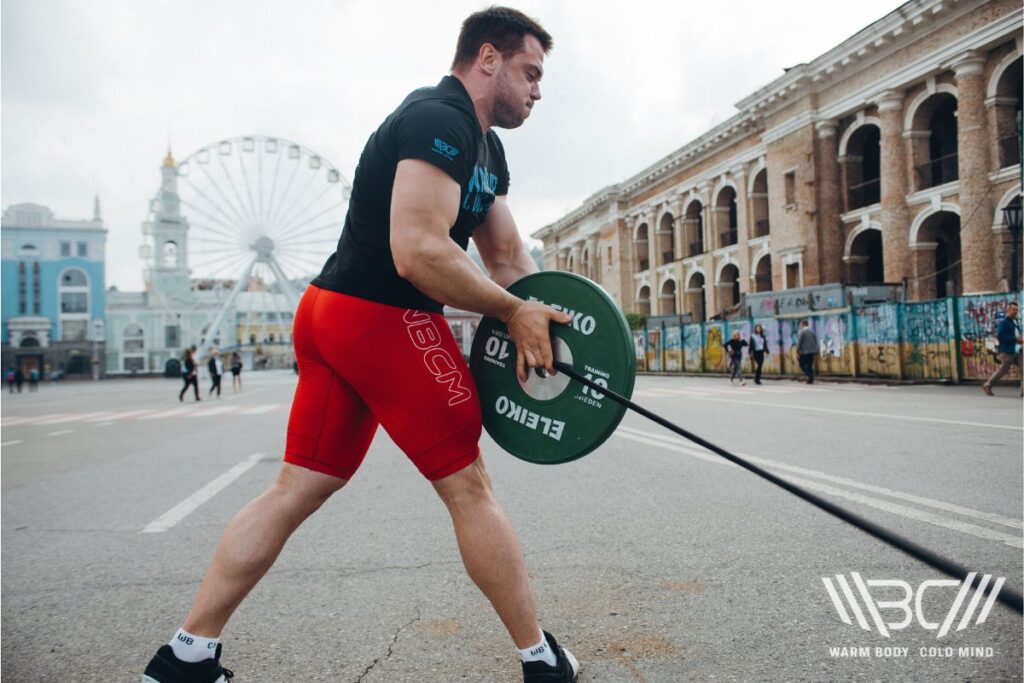
Don’t be discouraged, though! You might think you need to be a shopaholic to get the size right without trying the clothes on first, but that’s not true. All you need is a size chart and a way of taking your measurements correctly and you’ll be all set!
Grab that tape measure and let’s go see the following: what’s a compression shirt, is a singlet better, how to take measurements, and what do these clothes do?
Compression T-Shirt
You don’t want your clothes to be too much of a hassle and, in fact, the best clothes (in terms of working out) are ones you don’t even feel. Compression T-shirts are like that… If they’re good, of course. Want a shortcut so you don’t have to sift through hundreds of options online?
The compression T-shirts by our very own WBCM are made of Supplex Sport material and not only will you look great in them, they’re also going to last you a long time. And don’t worry about the color – it will stay as vibrant even after months of use. You can use them for everything; weightlifting, running, endurance training, general fitness… There’s no limit. You can check them out here.
1. Men’s Compression T Shirt Size Chart
The most important measurement for compression shirts is your chest size. Your waist and hips aren’t as important, so make sure to measure your chest correctly. Grab a flexible measuring tape and wrap it around the fullest part of your chest.
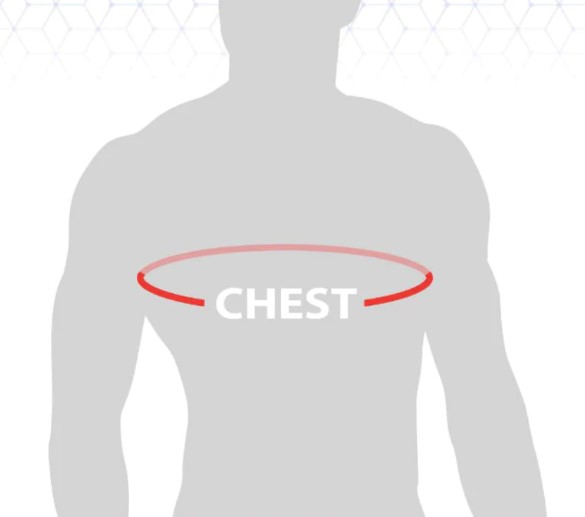
The tape measure shouldn’t be too tight against your body, but it also shouldn’t be loose (you need to be able to breathe comfortably). Once you have the measure, just compare it to the men’s T-shirt size guide below and you’re ready to add your new shirt to the cart!
| SIZE | CHEST SIZE cm | CHEST SIZE inches |
|---|---|---|
| S | 94-98 | 37-38.5 |
| M | 98-102 | 38.5-40 |
| L | 102-106 | 40-42 |
| XL | 106-110 | 42-43.5 |
| XXL | 110-114 | 43.5-45 |
| XXXL | 114-118 | 45-46.5 |
2. Men’s Compression Long Sleeve Size Chart
If you’re working out outside or you just get cold easily, long sleeves could come in handy, and they’ll offer some muscle support, too. Measuring the length of the sleeves is a teensy bit trickier than your chest size, but it’s still pretty easy.
Start at the base of your neck, at the center of the back and extend the measuring tape over the top of the shoulder. Stop at the outer edge (where your shoulder meets the arm), and then continue from that outer edge down the arm to the wrist. Make sure to follow the natural curve of your arm, don’t go in a straight line because your arms are not straight.
When you’re done with measuring, take a look at the compression shirt sizing chart.
| SIZE | CHEST SIZE cm | CHEST SIZE inches | SLEEVE LENGTH cm | SLEEVE LENGTH inches |
|---|---|---|---|---|
| S | 94-98 | 37-38.5 | 64 | 25.2 |
| M | 98-102 | 38.5-40 | 65 | 25.6 |
| L | 102-106 | 40-42 | 66 | 26 |
| XL | 106-110 | 42-43.5 | 67 | 26.4 |
| XXL | 110-114 | 43.5-45 | 68 | 26.8 |
| XXXL | 114-118 | 45-46.5 | 69 | 27.2 |
Should Compression Shirts Be the Same Size as Regular Shirts?
Ask yourself – if your regular ol’ shirt fit the same, would you even bother buying something compressive? Of course not, because compression clothes don’t (and shouldn’t) fit the same.
Compression clothes are made to be snug and produce pressure to improve circulation, so the whole purpose is different compared to your normal clothes. Generally, you want compression clothes to fit tighter than what you wear every day, and that goes for shirts, too. Be prepared for a decent amount of trial and error, though, because someone might prefer a super tight fit, but that doesn’t mean you will.
Try a few sizes out and see what works best because, although you want compression, you still need to be comfortable. The compression shirt size guide isn’t the same thing as your regular size chart for everyday clothes, so that’s another thing that’s good to know.
Compression Shorts
Compression shorts are popular in general, but those that do high-intensity workouts (like weightlifting, running, etc.) love them the most. WBCM’s compression shorts are made of Supplex Sport material, which is known for being super durable.
What are compression shirts for? The best thing about these shorts (other than being crazy comfy) is that they prolong the lifespan in areas that come in contact with the bar during intense workouts, so you can expect to have them for a really long time. As for the compression short size chart, we’ll get to that in a second, but feel free to browse our range here.
1. Size Chart for Men’s Compression Shorts
Measuring for shorts (at least the compression type) is all about the size of your waist – true waist. Your true waist is the narrowest part of your torso, just below the rib cage and above the belly button. There’s a chance you’re not really sure where that is, but there’s an easy way to find it.
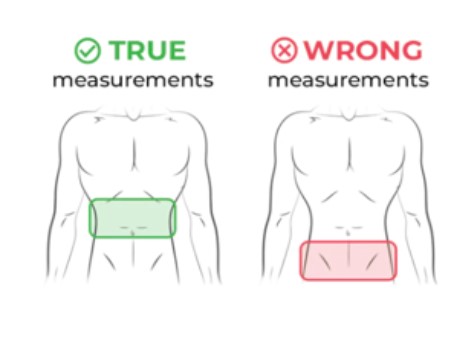
Bend to one side and you’ll see a crease form. That crease is your true waist and that’s where you need to measure. If you’re a woman, it’s going to be slightly easier to find your true waist because the narrowest part is more obvious.
Grab a flexible tape measure, wrap it around your waist, and take the measurement as you breathe out. Then, compare it to the size chart to see what would fit you best. Compression shorts sizing depends on the brand, but here’s a chart with general information you can go by.
| SIZE | WAIST SIZE cm | WAIST SIZE inches |
|---|---|---|
| S | 76-81 | 30-32 |
| M | 81-86 | 32-34 |
| L | 86-91 | 34-36 |
| XL | 9196 | 36-38 |
| XXL | 96-101 | 38-40 |
2. How Tight Should Compression Shorts Be
The fit should be snug, but not too tight. You want to feel the support without noticing any discomfort or digging into the skin, and the main focus is around your thighs and buttocks. It’s super important that they stay in place, which means no bunching or riding up during exercises because that is one of the most annoying things in the world.
Imagine being focused on your workout and trying to break records only to be distracted by a pair of shorts. Not a pretty picture, right? If you’re in between sizes, you’ll need to try a few pairs of shorts to see which you like best.
Compression Singlet
Compression singlets are really practical because it’s just one piece of clothing, but it covers like it’s two-piece. Our compression singlet is made of the exact same material like shorts and T-shirts, Supplex Sport, that will give you the ideal amount of support and last a long, long time.
Our singlet is made specifically for heavyweight athletes who want to look stylish, but who also want durable workout clothes. It’s a part of our collection you can find here. Whether it’s a regular or a plus size singlet – we have it all!
1. Men’s Singlet Size Chart
Since this is a singlet, you’ll need to measure a few things – your chest, hips, and height (not your general height, but from shoulders to the middle of your upper leg). You already know to measure your chest at its fullest part, and it’s the same for your hips – go around the widest part of your hips and buttocks and keep the tape measure parallel to the ground. It should be snug, but not too tight against your body.

Once your chest and hips are done, you need to get your height, and you’ll need someone to help you to make the measurement 100% accurate. Stand upright, with a straight posture, and measure from the top of your shoulders down to the middle of your upper leg. Since you have three different measurements, write all of it down and compare it to the size chart to find your size.
If you’re a woman, you’ll measure your hips and height the same way, and as far as your bust goes, you’ll wrap the tape measure around the fullest part of the bust. Breathe naturally and don’t pull the tape too tight, it shouldn’t feel uncomfortable.
| SIZE | WEIGHT CLASS | WAIST SIZE inches | HIP SIZE inches | HEIGHT inches |
|---|---|---|---|---|
| S | 62-72 kg/ 136-159 lbs | 38-41 | 20-21.6 | 62.9-65.3 |
| M | 73-84 kg/ 161-185 lbs | 41.7-43 | 21.6-23.2 | 65.3-67.7 |
| L | 85-98 kg/ 187-216 lbs | 43.3-44.4 | 23.2-24.8 | 70-72.4 |
| XL | 99-110 kg/ 218-242 lbs | 44.8-46 | 24.8-26.3 | 72.4-74.8 |
| XXL | 111-125 kg/ 245-275 lbs | 46.4-47.6 | 26.3-27.9 | 72.4-78.7 |
2. How to Choose a Size
Don’t stress about choosing the size because the process is pretty simple and there’s not that much to it. The most important part is to take the measurements correctly, and after you have that, just compare it to the singlet size chart. If you’re in between sizes, think about what you want to use your clothes for in terms of exercises.
If you want the most support you can get, size down. If you like a looser fit (although don’t expect loose in the true sense of the word because it’s compression after all), size up and that’s it.
You can also take a look at customer reviews and see how the clothes fit and whether the products are true to size or not. The best thing, of course, is for you to try the clothes on if possible, but if you’re ordering online, just make sure the return policy is okay and that you can return and exchange anything you don’t like.
What Is Compression Clothing Used For?
Don’t worry, this is not a gimmick; compression clothing has an actual purpose and once you try it, you’ll never look back.
Compression clothing puts targeted pressure on specific muscle groups, which results in better circulation, it can reduce the vibration of your muscles, fatigue, and soreness. Athletes love compression clothes because it gives support and it can even reduce the chance of injury.
Another thing that’s great is that this type of clothes can keep your body cool during workouts, plus you get a whole range of stuff to choose from – shorts, tights, shirts, sleeves, socks…
Compression is popular because of all the benefits it has, so you’ll find a lot of compression clothes out there.
If you’re not a gym junkie, you can still find use for compression clothes, especially if you have issues with circulation.


